By continuing to browser our site and use the services you agree to our use of cookies, Privacy Policy and Terms of Use. You can change your cookie settings through your browser.
Early in the morning, in Haikou’s Old Dad’s Tea Shops, bamboo steamers open one after the other to reveal translucent, colorful cakes and wisps of white steam. In the afternoon, in Qionghai’s grain snack shops, skilled cooks roll up green coconut leaves and tuck sticky rice balls encrusted with coconut shreds inside. In the evening, in Sanya’s local restaurants, mango rice noodle rolls emit a golden glow. All across the island, locals and visitors join each other in lifting their chopsticks and spoons and making short work of these vibrant, tropical flavors.
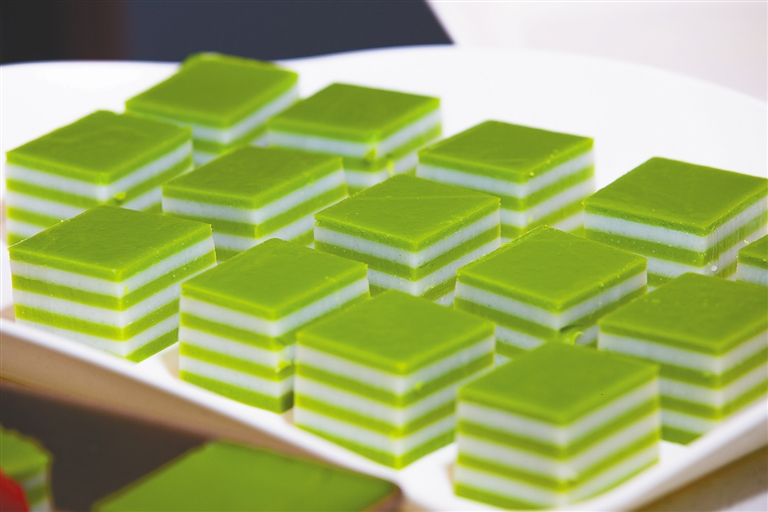
Pandan Cakes (Photo: Hainan Daily)
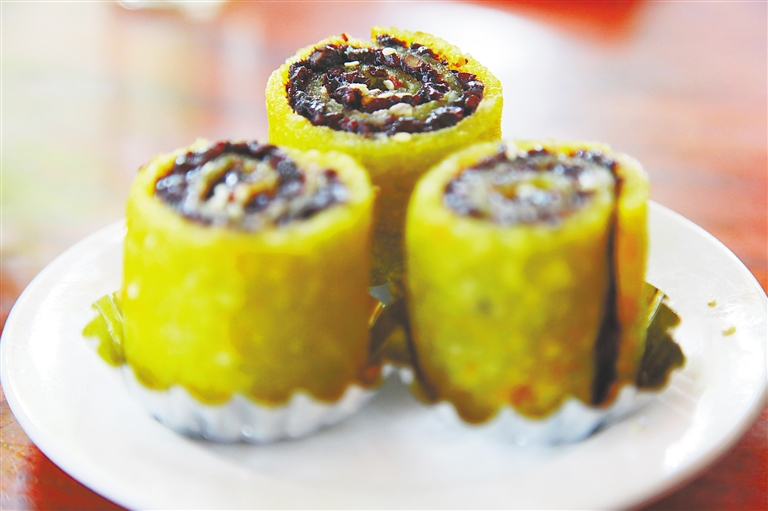
Qionghai Grain Rolls (Photo: Hainan Daily)
Abundance Leads to a Taste Explosion
Hainan’s rich soil and teeming waters give local cuisine the gift of a wide variety of flavors, textures, shapes, and colors. Rice, peanuts, sesame, coconut, mango, pandan leaves, seafood, and more fresh island ingredients are transformed by skillful Hainan chefs into mouthwatering dishes that leave diners somehow both fully satisfied and desperately craving more.
Hainan’s tropical climate means that rice can be harvested more than once per year. From a large number of rice noodle dishes including Hainan rice noodles, Hou’an rice noodles, and sour rice noodles, to different pastries such as Yibua, ‘sausage’ buns (this dish is named for its resemblance to sausage, but in fact contains no pork products), saltwater buns, and sour cakes, the Hainanese people have embraced the different qualities of different rice varieties, creating dishes that shine as stars in the foodie firmament.
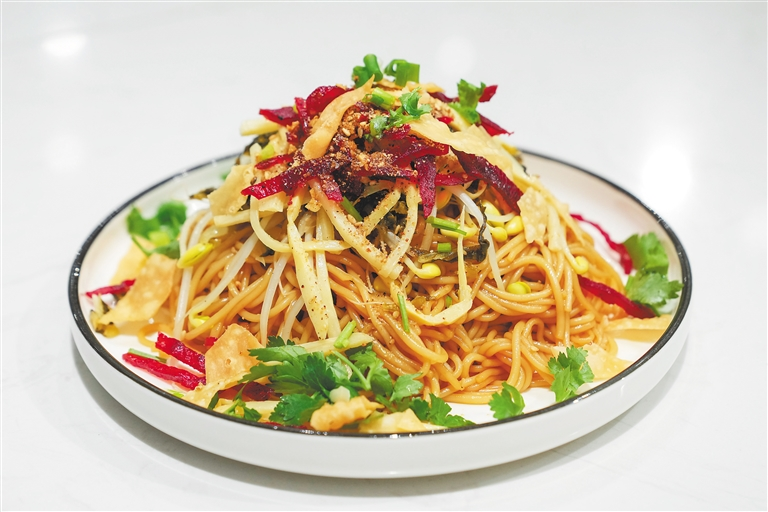
Hainan Rice Noodles (Photo: Hainan Daily)
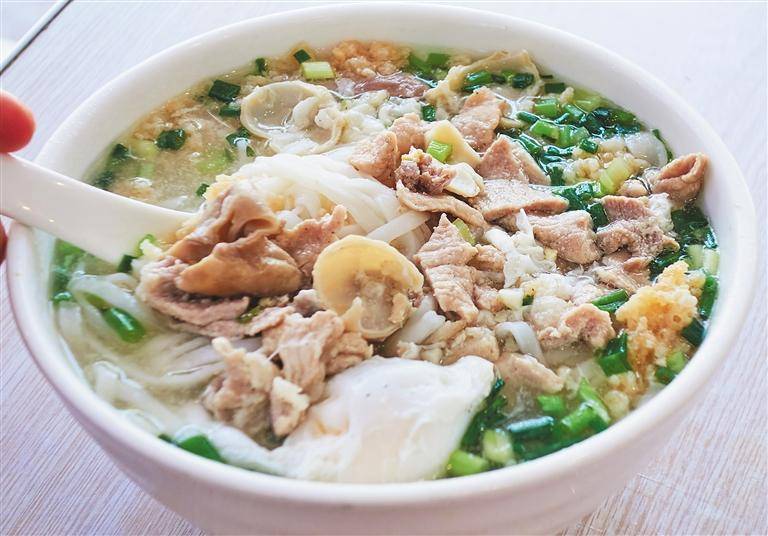
Wanning Ho’an Rice Noodles (Photo: Hainan Daily)
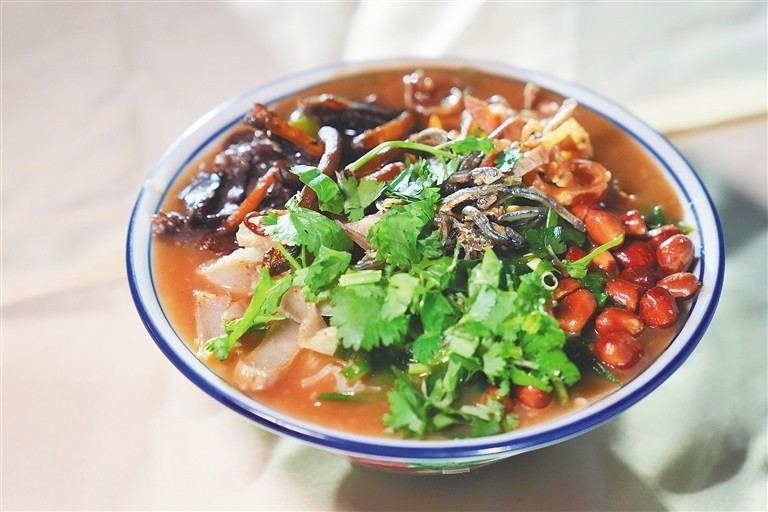
Lingshui Sour Rice Noodles (Photo: Hainan Daily)
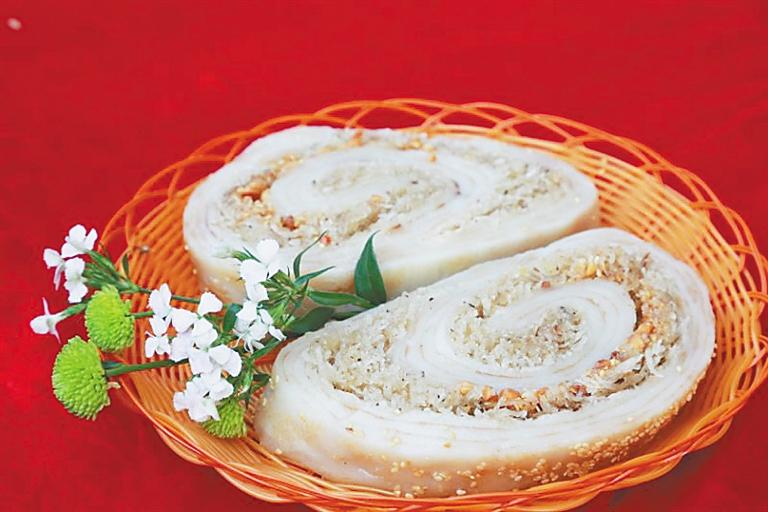
Wanning 'Sausage' Buns (Photo: Hainan Daily)
On Qunzhong Street in Sanya, breakfast shops are crowded with eager diners every morning. Hardworking cooks grind soaked rice into rice paste, and pour it into the steamer. Soon, snow-white rice cakes emerge, which are then sprinkled with fried minced garlic and chopped green onions. As customers place their orders, chefs skillfully separate diamond-shaped slices, then anoint them with a special sour sauce. This is a local breakfast favorite!
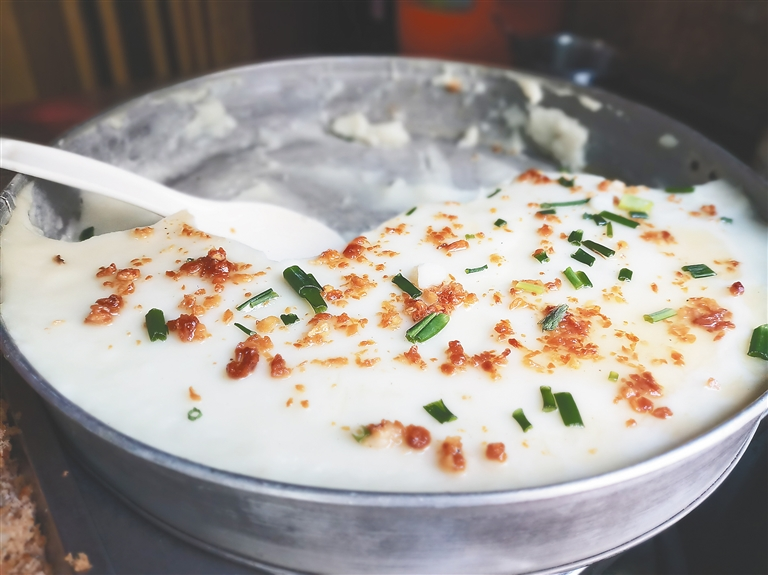
Sanya Sour Cake (Photo: Hainan Daily)
Puqian Town, Wenchang’s popular local specialty Zaopucu has now made its way into Beijing, Shanghai, Guangzhou, and other parts of the country, where it’s hailed as the hottest new must-eat dish. The zingy, sour seafood delicacy is made from a soup base of fermented vinegar paired with fresh local ingredients including beef meatballs, shellfish, shrimp, crab legs, seaweed, and more. This is the true flavor of Hainan!
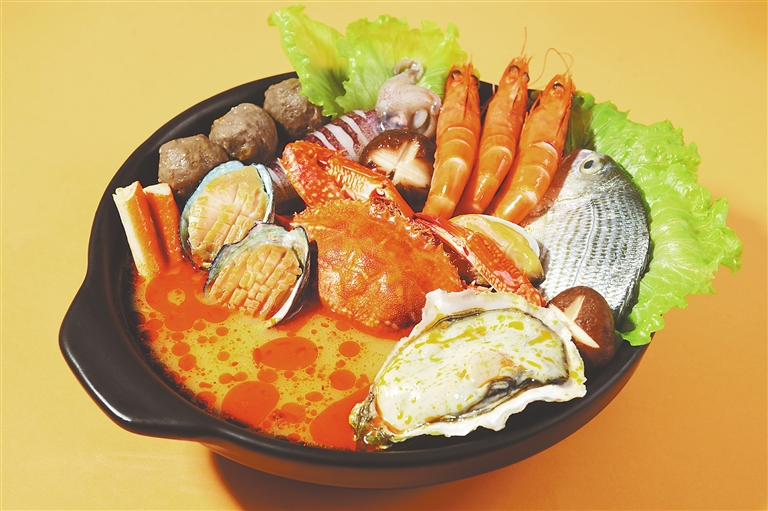
Seafood Zaopucu (Photo: Hainan Daily)
In Hainan, coconuts lie at the heart of many beloved dishes. In Jiaji Town, Qionghai’s Yinhai Grain Street, you’ll have plenty of coconut treats to choose from, including Qingbuliang Dessert Soup and cold Coconut Jelly.
Early in the morning, the chefs at Jinkejia Grain, a restaurant in Qionghai, begin to prepare Qingbuliang ingredients. Coconuts are finely grated to produce snowy coconut flakes, which are then filtered and pressed, resulting in milky-white coconut milk. Then, red beans, mung beans, barley, taro balls, macaroni noodles, and other ingredients are cooked to perfection, and added along with shredded coconut, raisins, and watermelon cubes. Another cool, refreshing bowl of Qingbuliang is ready to be devoured!
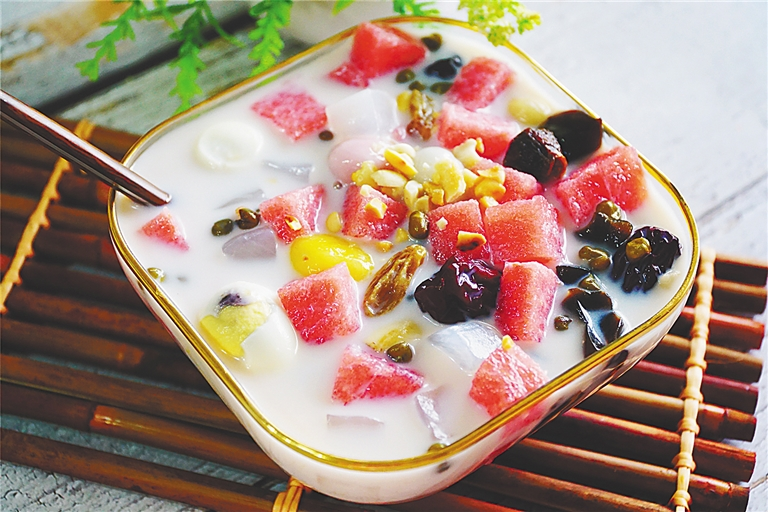
Qingbuliang (Photo: Hainan Daily)
Cold coconut jelly has swept the Hainan dessert market in recent years. The secret lies in blending the coconut meat for a smooth texture and mild, sweet flavor. Chefs first split green coconuts, extract the coconut milk and meat, then blend them together and simmer the mixture over low heat until they are at a low boil, finally stirring the liquid into a silky magnificence. Finally, the concoction is poured back into the waiting coconut shell, capped with the coconut ‘lid’, and put into the freezer to set, resulting in a chilly, sweet, coconut pudding treat.
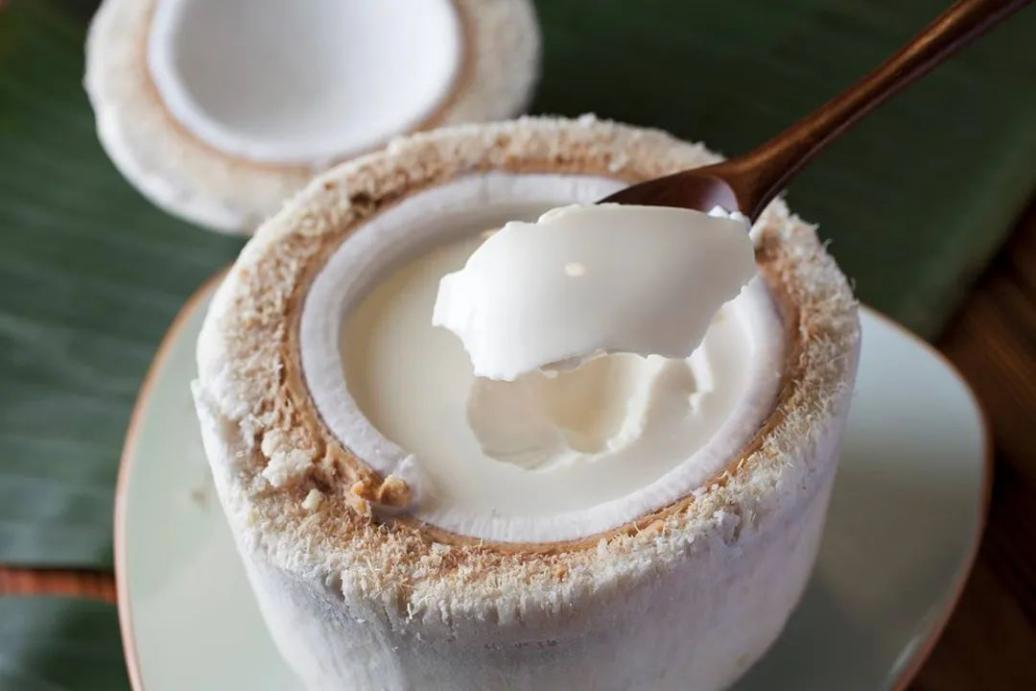
Cold Coconut Pudding (Photo: Hainan Daily)
A bright, fresh verdant hue is gradually tinting the Hainan snack map green and winning over island foodies - pandan leaf! Pandan is an herb that’s used in Hainan to make juice and add a subtle sweetness to many culinary creations. In the heat of the afternoon, a cup full of wriggling green pandan ‘shrimp’ will perk you right up! The ‘shrimp’ don’t come from the sea, but are instead created in the kitchen. Chefs mix pandan leaf juice with tapioca flour, knead the mixture into a ball, and press them through a slotted spoon. The ‘shrimp’ leap into the boiling water, soon turning as transparent as jade. They are added to iced coconut milk or brown sugar syrup, creating a refreshing, eye-catching beverage!
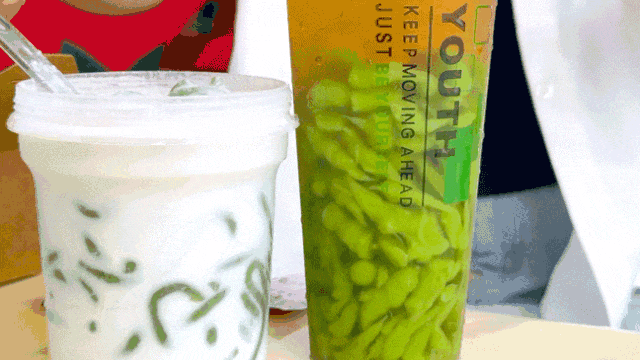
Cold Pandan ‘Shrimp’ (Photo: Hinews)
The people of Hainan are very cognizant of the link between food and health, and can always find the secret to incredible flavor in the island’s abundant herbs, fruits, and vegetables. The fresh green herbs of the mountains and the sweetness of brown sugar are combined in quirkily named Jishiteng -‘chicken dropping soup’ (which doesn’t actually contain anything that comes out of a chicken, never fear), seasonal treats such as pineapple cakes and roasted sugar cane imprint the flavors of the seasons into fond memories, and even an ordinary looking radish can be combined with rice noodles and transformed in a frying pan into a classic Hainan snack - the radish cake.
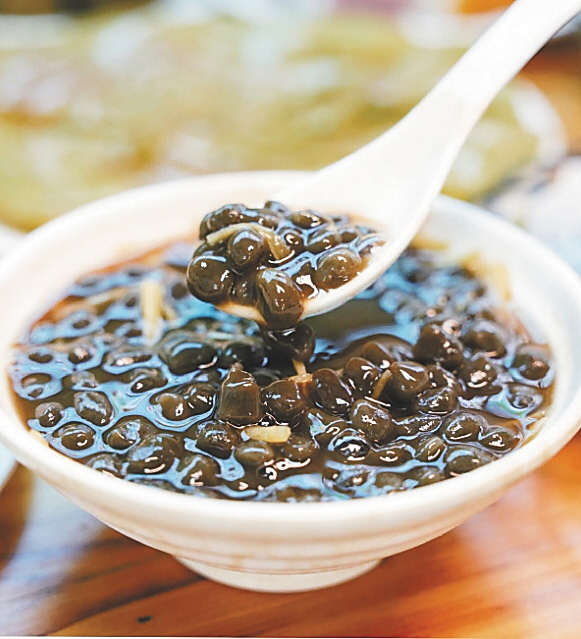
'Chicken Dropping' Soup (Photo: Hainan Daily)
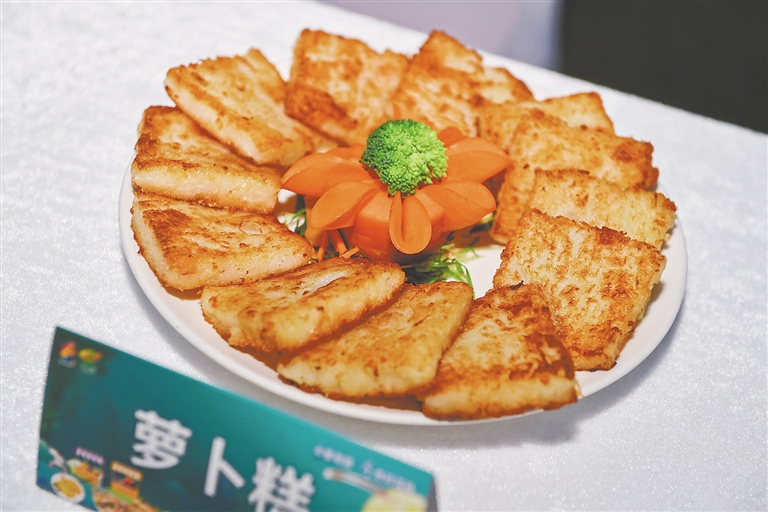
Radish Cakes (Photo: Hainan Daily)
Auspicious Shapes and Colors
Many of Hainan’s most iconic culinary treats are not only great to eat, but also have deep meanings hidden behind their bright colors and fanciful shapes.
Tables at a popular porridge chain restaurant in Haikou are often topped with large, shining, golden spheres known as ‘Jiandui’ (which literally means ‘treasure pockets’). These giant pastries are created from sticky rice paste kneaded on a smooth surface, filled with shredded coconut or crushed peanuts, rolled into a ball, and fried until golden brown. “Just look, it’s round and golden, it looks quite festive.” Diner Liu Li picked off a bit of the golden fried pastry and took a bite, discovering that the outside is crisp, and the inside soft and tender.
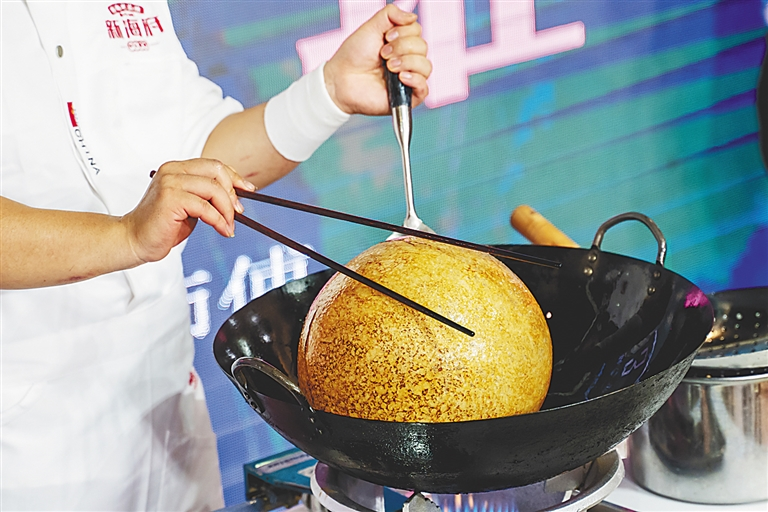
Jiandui (Photo: Hainan Daily)
In the teahouses of Xinglong, Wanning, an alluring aroma drifts up from another golden delicacy - the golden cake, which traces its origins to Southeast Asia. Every morning, locals visit the teahouse, where they order a pot of coffee brewed from beans grown in the area’s many coffee plantations and a few slices of golden cake to start the day right. For the people of Xinglong, these golden cakes are not only a yummy breakfast snack, but also hold their hopes and dreams for family prosperity and career success. For this reason, golden cakes are made before Spring Festival every year by families living in Xinglong, who serve them to visiting relatives and friends or give them as holiday gifts.

The shining color of the golden cake comes from eggs and pandan, while the flavor is provided by tropical herbs and spices such as lemongrass, turmeric, and fresh coconut paste. (Photo: Hainan Daily)
Every Spring Festival, Hainanese people also prepare brown sugar rice cakes called Nian Gao. Gao, or cake, sounds the same as the Chinese word for ‘high/lofty’, and so eating this dish during the Chinese New Year period symbolizes a desire to reach greater heights of success in the coming year. Round brown sugar rice cakes are popular in Hainan, and the flavor adds another layer of meaning - a hope for a life filled with sweetness, or as they say in Italian, ‘la dolce vita’.
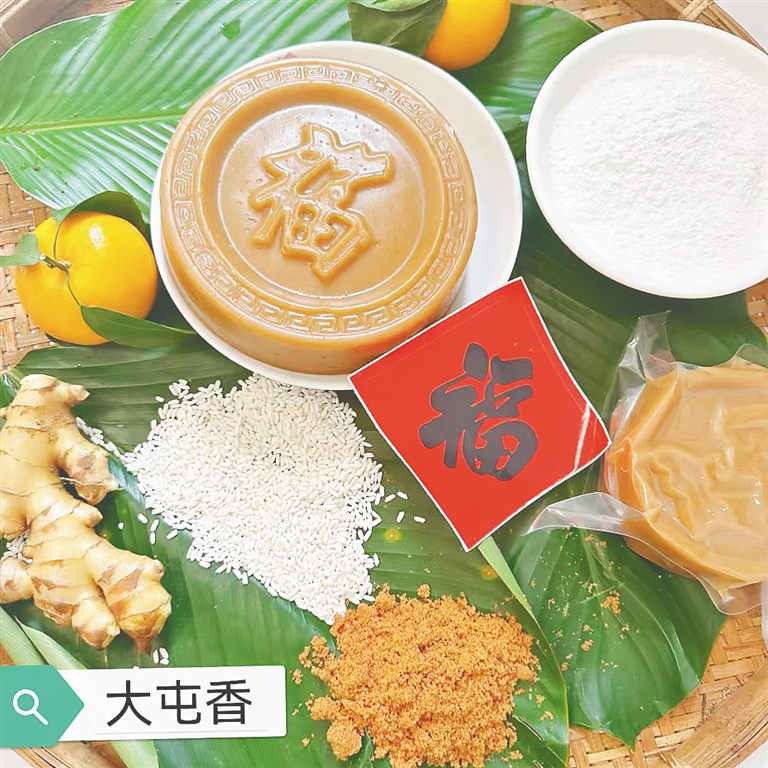
A brown sugar ‘Nian Gao’ rice cake along with the raw ingredients used to prepare the dish. (Photo: Hainan Daily)
In Huiwen, Wenchang, ‘Sanjiaoliu’ are traditional local specialties featuring a refreshing savory-sweet flavor and tender, smooth texture. The three corners of these edible triangles are said to represent happiness, wealth, and longevity, the three secrets to a good life. When a child turns one, or when celebrating the birthday of an elder, relatives serve them Sanjiaoliu to express blessings.
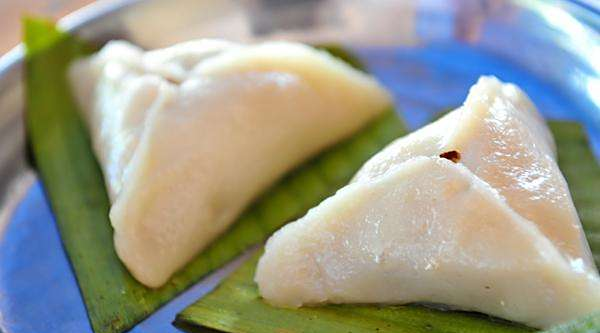
Sanjiaoliu (Photo: Baidu)
The auspicious meanings of many Hainan dishes also lie in the subtle details. Wang Li, from Haikou, remembers how her aunt would add a red dot to freshly made Yibua rice cakes. She would dip a bamboo stick in red yeast rice juice and lightly tap it against the snow-white surface of the rice cake, which was just like stamping it with an auspicious seal to guarantee deliciousness. “My aunt told me that the red dot is not just a decoration, but also represents hopes for a better life,” she explained.
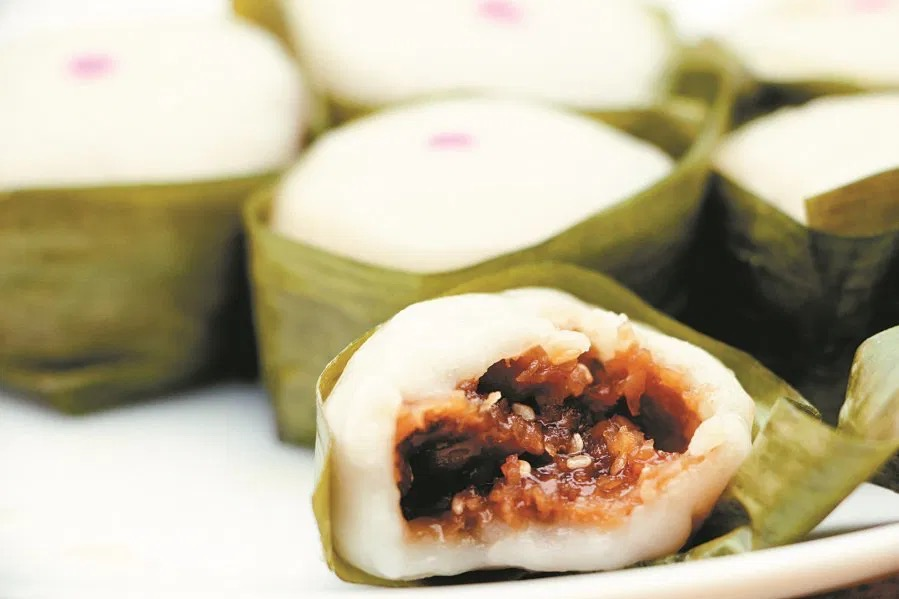
Yibua (Photo: Oriental Daily)
New and Old Combine
Just as cuisines across the world continue to evolve with changing times, Hainan cuisine is also charting a path combining tradition with innovation.
At 7 AM, the streets near the Sanya Afang Old Dad’s Tea Shop are already filled with mouthwatering aromas. Su Xiaoyu, the young proprietor, has created many new dishes that incorporate tradition while also catering to the current market. “When I was a kid, I would go to Old Dad’s Tea Shops with my grandfather. The never-ending tea refills meant I could sit there all afternoon with a few pastries.” For Su, those memories of laughter and special treats at the Old Dad’s Tea Shop form a vivid picture of life in Hainan. But as Sanya developed, those kinds of friendly Old Dad’s Tea Shops gradually began to disappear. “Young people these days prefer going to social media darling coffee shops, but I think someone should preserve these traditional flavors,” said Su.
The signature dishes of the Afang Old Dad’s Tea Shop, such as pineapple buns and BBQ pork buns, are made using traditional recipes, while also incorporating modern flavor variations to cater to the preferences of the new generation. “Many of our dishes now feature pandan, which brings diners a new, refreshing sensation.” Su showed off the shop’s charcoal-grilled pandan kaya toast. It’s first steamed, then baked to create a crisp crust and a soft, tender interior. It’s served with freshly made pandan kaya syrup drizzled over an ice-cream topping, giving customers a taste of ice and fire.
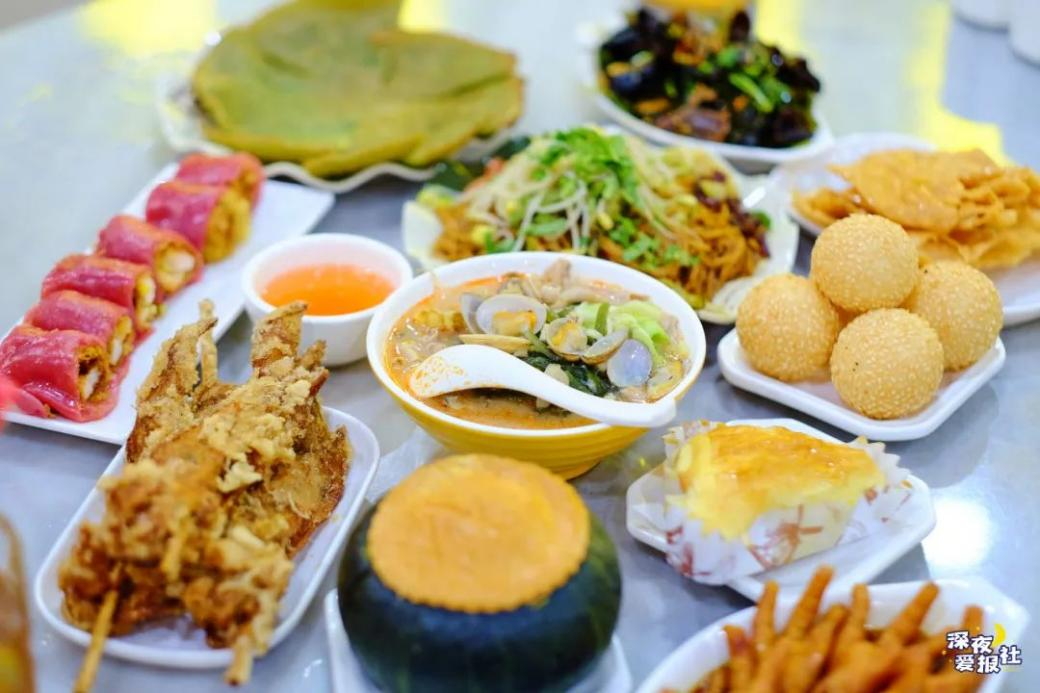
Just a few of the many options to choose from at a Hainan Old Dad’s Tea Shop. (Photo: Hainan Daily)
At the Dengji Qingbuliang Restaurant on Haikou’s Meiyuan Road, Qingbuliang ice cream is a hot commodity. The ice cream slowly melts, merging with fresh coconut milk. Toppings including the customer’s choice of crushed peanuts, sago, red beans, mung beans, black grass jelly, silver ear mushroom, raisins, and more add an array of pleasing textures and flavors.
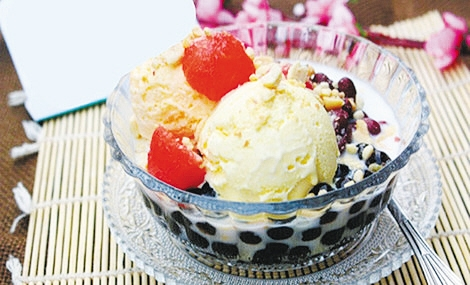
A match made in heaven, also known as Hainan - Qingbuliang and ice cream. (Photo: Hainan Daily)
Pure white rice noodles lovingly wrapped around hearty chunks of golden mango, then drizzled with a thick, sweet mango sauce - these stunning mango rice noodle rolls are foodie favorites. You’ll see them in busy night markets, bustling city streets, and even in high-end restaurants.
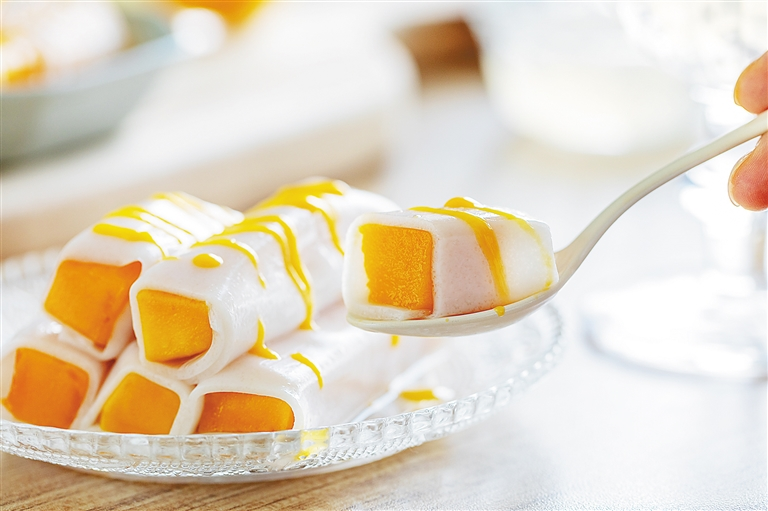
Mango Rice Noodle Rolls (Photo: Hainan Daily)
In the past, you had to venture down narrow streets and hidden alleys to discover the true flavors of the island. Now, high-end hotels like the Atlantis Sanya Resort offer upscale versions of authentic Hainan dishes, such as Old Dad’s Tea Shop dim sum pastries.
“We’ve made innovative upgrades while retaining the traditional characteristics of these dishes. We offer fresh fried golden garlic flavor dough sticks that are crunchy on the outside and soft on the inside, chicken wings with crispy fried skin and tender meat, and a Hainan version of Italian espresso coffee. Guests can add condensed milk to taste. Flavorful lemons are paired with fresh pandan juice to create a refreshing, unique pandan lemonade,” said Zhang Bo, deputy director of the Atlantis Sanya Kaleidoscope Buffet Restaurant.
The Wide World of Hainan Cuisine
07:12, 20-July-2025Oriental Darter Spotted for First Time in Hainan
05:51, 19-July-2025Chinese Tianzhou-9 Cargo Spacecraft Successfully Launched
05:46, 19-July-2025Changjiang and UOS hold investment promotion meeting
05:45, 19-July-2025Hainan Completes First Scenic-type Open Landscape Substation
05:33, 19-July-2025Hainan's 72 shipping lines carry goods across the globe
05:30, 19-July-2025By continuing to browser our site and use the services you agree to our use of cookies, Privacy Policy and Terms of Use. You can change your cookie settings through your browser.





